Black Families Haven’t Benefited from Intergenerational Wealth, But Banks Can Help Narrow the Gap


No matter who the victors will be in next month’s U.S. elections, society’s most stubborn problems won’t dissipate on their own, ever. That’s particularly true of the societal wounds that keep festering due to racial injustice — and one way it is still manifested across society is in the huge intergenerational wealth gap when we compare white and Black families in America.
The foundation of an economic divide
Estimates on how this affects the wealth divide between white and Black families are all over the map. The Urban Institute, for example, has estimated that large monetary gifts and inheritances account for 12 percent of the difference in wealth when comparing Black and white households.
Last year, the Federal Reserve Bank of Cleveland, in a study that found years of comparing annual incomes of white and Black Americans were not getting to the core of understanding this challenge, reached a far more dire conclusion: “We find that the income gap is the primary driver behind the wealth gap and that it is large enough to explain the persistent difference in wealth accumulation.”
Going further, that study's authors added: “The fact that Blacks, on average, have considerably less wealth than whites is troubling, not just because it is an inequality of outcomes, but also because it strongly suggests inequality of opportunity.”
Statistics like those outlined above help explain why, on average, data suggest the average net worth of white families exceeds that of Black families tenfold.
Editor's note: Be sure to sign up for the weekly Brands Taking Stands newsletter, which arrives in your inbox every Wednesday.
That’s a huge deficit to overcome, and discussions on how to tackle this problem via public policy offer a wide range of suggestions. Ideas range from revamping the tax code to eliminating student debt to even turning the retirement savings model on its head and having the federal government start a fund, i.e. “baby bonds,” for each newborn in the U.S. based on their families’ income.
This gap in intergenerational wealth has its foundation in the cruelty of U.S. history: the collapse of the Freedman’s Bank in the 1870s, which wiped out the savings of former slaves; illegal confiscation of Black-owned land by their white neighbors, a tragedy that befell one of George Floyd’s ancestors; Jim Crow laws; and most recently, the mass incarceration we’ve witnessed in the past generation.
A harmful past prevents families from building long-term wealth
The impacts of this ongoing intergenerational wealth gap are devastating. Family wealth provides economic cushions at times of need. Having that access to cash (or even a home equity line) can help a family through a rough economic patch. Wealth allows for investments in real estate, and the availability of such funds can pay for a child’s education without turning to burdensome loans.
The recent track record of cooperation between Congress and the White House doesn’t bode well for landmark legislation that could help claw away at this gap in intergenerational wealth. But that doesn’t mean the same institutions that have contributed to this massive divide — namely banks — can’t have a role in solving this problem. Yes, financial institutions have had a role in piling on this problem, whether it’s from decades of redlining, the sub-prime and foreclosure crises of a decade ago, or retail banks’ outright avoidance of Black communities.
Nevertheless, despite what the political landscape will look like three weeks from now, there are still steps the financial industry can take.
Can banks chip away at the intergenerational wealth gap?
In a study published this summer, Boston Consulting Group (BCG) suggested some reforms that the U.S. financial sector could harness that are simple and yet are also forehead slapping. They include integrating financial education and literacy within the typical bank-customer relationship process; judging performance not on the level of debt, but rather on a customer’s financial wellness; working with companies to launch and expand employee matching programs for 401(k) retirement plans; and finding new ways to expand savings products that can help families build wealth.
Granted, the emerging fintech sector has had a leg up with apps that help boost savings by rounding up purchases or diverting a few bucks here and there to help their customers build a nest egg.
To that end, banks could launch such campaigns focused on long-term wealth accumulation if and when another round of stimulus checks ever becomes the reality. Aside from the Americans who desperately need that money now, there are families who could be persuaded to invest or save that cash if they understand the benefits, rather than rushing to the nearest big box store. And opportunities will arise next year, too, once tax refund season is on.
On Thursday, October 15 from noon to 2:15 p.m. ET, Episode 2 of 3BL Forum: Brands Taking Stands - Business Elects to Lead will focus on one of the most important issues that we as a society have got to honestly reckon with – racial and economic inequities – and the importance of business leadership at a time when it’s needed most. One topic of discussion will include the importance of how to bridge this intergenerational wealth divide.
During Episode 2, we’ll feature conversations with senior leaders from BET Networks, Pizza Hut, Zeno Group, Newman’s Own, Chief Executives for Corporate Purpose (CECP), Fresh Energy, Porter Novelli, Northern Trust Asset Management, UnidosUS, The Cavu Group, Tides Foundation, Okta and Ben & Jerry’s. Registration is free.

Image credit: Larry Crayton/Unsplash
One Enduring Legacy of the Clean Power Plan: Lung Health

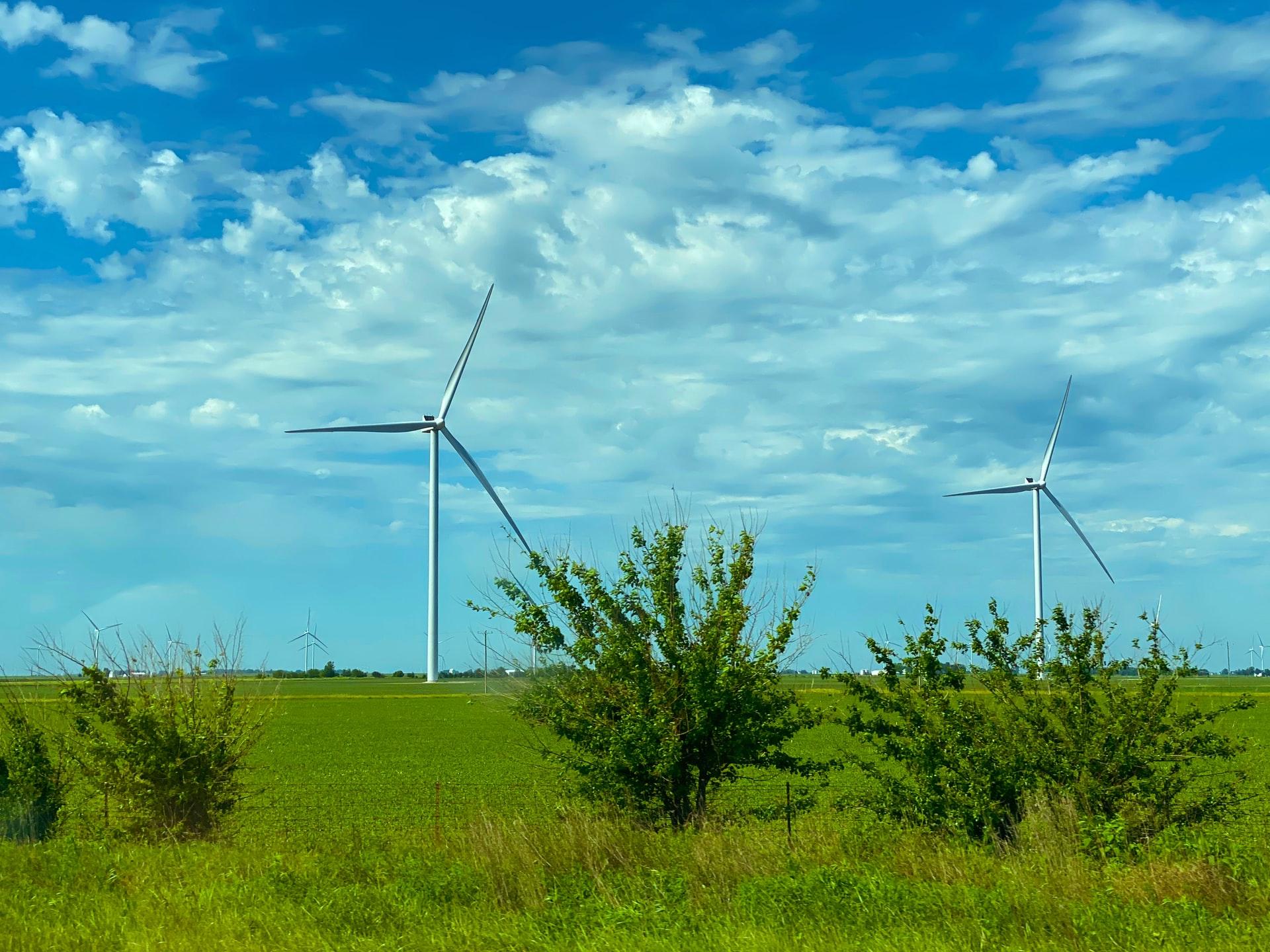
The global COVID-19 pandemic has raised awareness about the link between air pollution and lung health. In that context, a more aggressive federal policy on clean power would provide U.S. businesses with a platform for promoting their contributions to public health, in addition to supporting global decarbonization and green job creation. Nevertheless, the Donald Trump administration continues to undercut the bottom-line case for clean power by replacing the Barack Obama-era Clean Power Plan with far less ambitious goals set by the new Affordable Clean Energy rule.
The economic impact of the Clean Power Plan
The Obama administration launched the Clean Power Plan in 2015 based on the premise that the U.S. Environmental Protection Agency has the power to regulate carbon emissions from power plants under its Clear Air Act authority.
Rather than establishing new, one-size-fits-all restrictions on carbon output, the plan outlined a flexible approach. In concert with new EPA standards for carbon emissions from power plants, the Clean Power Plan established a national goal of a 30 percent reduction in carbon emissions from power plants compared to 2005, while enabling states to leverage their unique resources in support of that goal.
In addition to addressing the climate crisis, the Clean Power Plan was also an economic development initiative. It emphasized diversifying energy resources to stimulate economic activity and job creation in diverse areas across the country, with a particular focus on rural economic development.
National security was another significant factor in the Clean Power Plan. It expanded upon a 2011 memorandum of understanding between the U.S. Departments of Energy, Agriculture and the Navy, aimed at stimulating activity in the domestic biofuels sector.
The Clean Power Plan and the bottom line
The Clean Power Plan garnered widespread support in the business community when President Obama launched it in August of 2015 in the runup to the COP21 climate talks, where leaders formalized the Paris agreement on climate change. However, it also attracted intense criticism from fossil fuel stakeholders and their allies in government.
The plan was immediately challenged in court and did not go into effect before President Obama completed his term of office in January 2017. Six months later, newly elected President Trump declared that the U.S. would exit the Paris agreement. On October 10, 2017, EPA Secretary Scott Pruitt also announced that his agency would start the process to repeal its Clean Power Plan regulations.
Progress on decarbonization, with or without the Clean Power Plan
Even without support from the Clean Power Plan, the cost of wind power, solar power, and energy storage has dropped to the point where renewables can challenge both coal and natural gas for market share on a direct bottom-line basis. Long-term price stability and reliability of supply are two additional advantages for both companies and their customers.
In the meantime, a powerful wave of consumer concern over climate change has spurred the demand for more renewables among commercial energy consumers, including many of the world’s leading global firms. In addition, many of these companies are going beyond decarbonizing their own operations. They are using their buying power to motivate more clean power investments in their supply chains as well.
Adding a new and tragic element of support for the Clean Power Plan is the COVID-19 crisis. The lethal virus has highlighted the connection between pollution exposure, lung health and risk of mortality.
In addition, the economic crisis touched off by COVID-19 has brought renewed attention to the ability of clean tech industries to create thousands of new jobs in a wide range of fields including electric vehicles as well as energy storage and renewables.
Why the Affordable Clean Energy rule falls short
Considering the urgency of action on climate change, public health and job creation, now would be the perfect time for an aggressive, coordinated national policy that stimulates investment in clean technology. Instead, the Trump administration is continuing to support a much milder approach to power plant emissions called the Affordable Clean Energy (ACE) rule, which it proposed last year.
The new proposal drew sharp criticism from environmental and public health advocates, including the American Lung Association. In July 2019, ALA announced its intention to join the American Public Health Association in suing the Trump administration over repeal of the Clean Power Plan.
As noted by the ALA, the new rule was worse than a rollback. It would potentially create more pollution than ever before. “In addition to increasing the carbon dioxide pollution that fuels climate change, independent research from 2019 predicts that the ACE rule will result in some fossil fuel plants running more often and delaying their retirement, which would mean increased emissions of dangerous pollution as compared to the Clean Power Plan, and even as compared to no rule at all,” the ALA explained.
Backing up the ALA is research from the organization Resources for the Future, which receives support from the National Science Foundation, a full slate of Cabinet-level federal agencies, and top academic institutions among other prominent members of the scientific community. In a 2019 review of the Affordable Clean Energy rule, RFF explained that “an inflexible framework is built into ACE, reversing 40 years of scholarship and regulatory reform aiming to make regulation smarter, more effective, and less expensive.”
“The effect is to restrict the reach of the Clean Air Act in achieving emissions reductions from existing stationary sources,” RFF added. According to RFF’s analysis, the difference between the Clean Power Plan and the new rule is stark. Using EPA’s own data, RFF estimated that the new rule would reduce carbon dioxide emissions by just 0.1 percent between 2021 and 2050.
“It is difficult to believe that this magnitude of emissions reduction is a sufficient regulatory response to the harms of greenhouse gases confirmed in EPA’s endangerment finding,” RFF concluded, referring to the 2009 finding in which the EPA determined greenhouse gases in the atmosphere endanger human health and welfare.
Of particular interest to the business community is RFF’s point about regulatory reform. The group noted that the new rule would create new regulatory burdens on states while achieving practically zero benefits, an impact that directly contradicts the Trump administration’s stated goal of relieving the nation from the burden of ineffective federal regulations.
Now is the perfect time for the Clean Power Plan
By August 2020, the Congressional Research Service noted that several environmental advocates, 23 states, seven municipalities and the District of Columbia are also suing the EPA over the Clean Power Plan rollback.
The case has come before a three-judge panel of the U.S. Circuit Court for the District of Columbia, and last week reporter Marianne Lavelle of Inside Climate News took note of the latest development in the legal battle.
Lavelle observed sharp differences in the questions posed by the two Obama-appointed judges on the panel, compared to the Trump-appointed judge. In particular, she noted that both the Trump appointee and at least one of the lawyers representing the Trump administration in the case are both members of the Federalist Society, an influential conservative organization that has worked to stir up doubt over the science behind climate change and has received significant funding from fossil energy stakeholders. The organization is widely recognized as the lead decision-maker on Trump administration judicial appointments.
With the recent nomination of Amy Coney Barrett to the Supreme Court, the case is all but certain to come before a nine-member court packed with three judges endorsed by the Federalist Society.
There are still pathways to progress, but business leaders who advocate for swift, aggressive action on climate change, public health and job creation could find themselves swimming against an even more powerful tide in the years to come, regardless of the results of the November 3 election.
Image credit: Jennifer Griffin/Unsplash
Indonesia's Labor Rights and Sustainability Now at Risk, Say Critics of a Massive 'Jobs' Bill

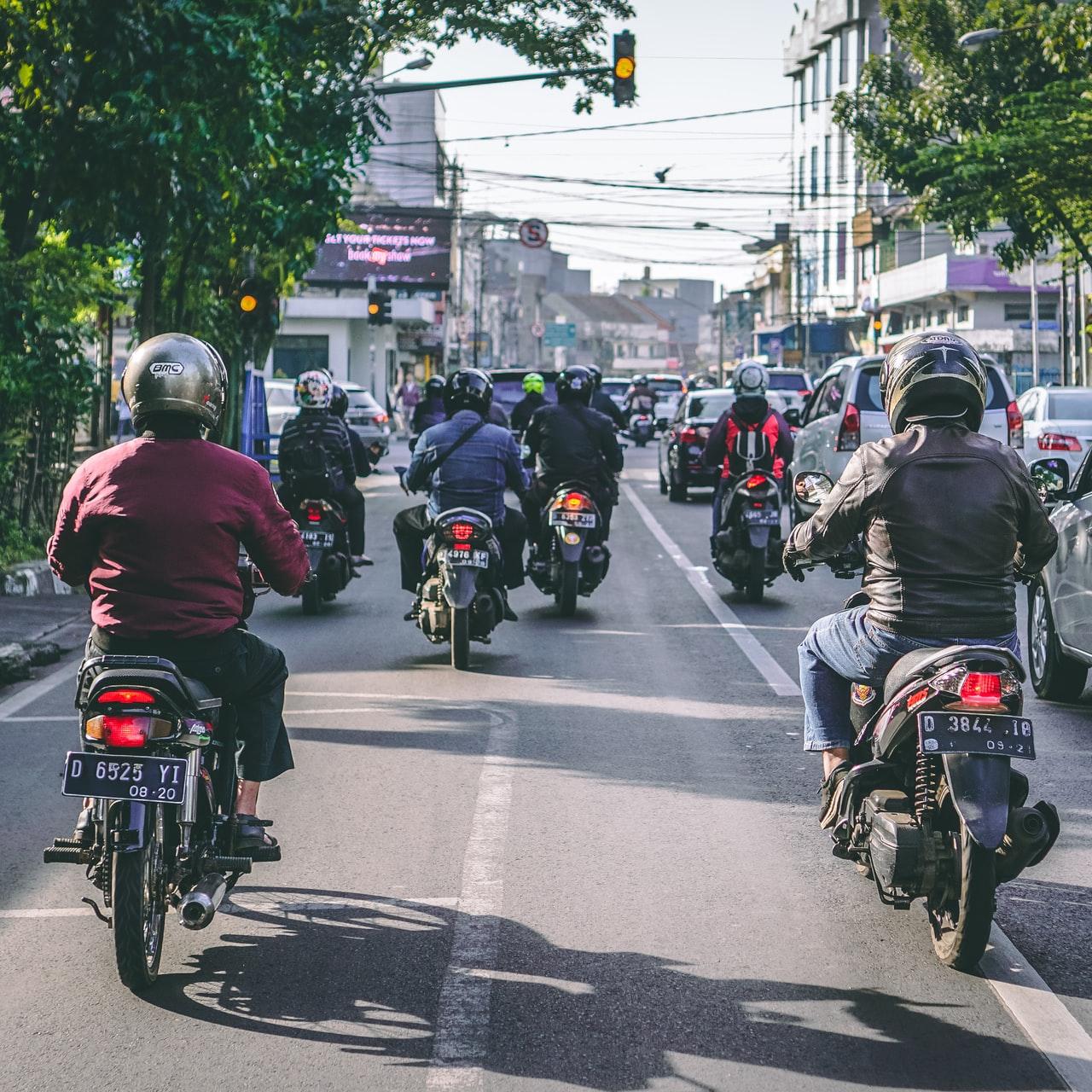
(Photo: Commuters on their way to work in Bandung, Indonesia. The nation’s federal government has passed a bill that critics say would result in setbacks for both labor rights and environmental sustainability.)
In what critics say is a step backward for both the environment and labor rights, Indonesia’s government has approved its new Omnibus Bill on Job Creation, receiving support from seven out of the nation’s nine political parties. Its passage occurred despite vehement opposition from citizens, labor unions and foreign investors.
The new stimulus bill, which supporters say is designed to boost jobs and increase foreign investment, cuts environmental regulations contained within 79 laws. The bill’s passing was controversially moved forward by the federal government's legislative body, after news reached officials of a planned three-day strike by workers opposing the bill.
A struggling economy is determined to save jobs, but at what price?
With Indonesia being one of the nations hardest hit by the COVID-19 pandemic, and its economy set to shrink for the first time since the Asian economic crises of the late 1990s, the pressure is on to create jobs. The bill’s passing, said the country’s President Joko Widodo, was a product of the need to cut red tape and to boost economic growth. Widodo also insisted that the amended bill will create 3 million new jobs for young people.
Indonesia’s reputation for how it manages its economy has taken a hit in recent years, partially reflected in the nation's ranking in the World Bank’s ease of doing business index. Indonesia had been climbing the index over recent years, but its rank stagnated at 73rd place as of 2019. On this point, officials have said the regulatory easing within the new bill will attract companies wishing to relocate from China. However, an article in the Chinese Journal of Environmental Law has called the amended bill a “setback,” stating that the lack of transparency during the bill’s drafting process contradicted the purpose of the bill itself.
Labor unions have also expressed indignation at the bill, highlighting that the new legislation cuts mandatory leave and reduces severance pay while allowing longer work hours. Amnesty International, the human and labor rights campaign group, is also a vehement critic of the bill. The group’s Indonesian executive director, Usman Hamid, called the bill “catastrophic,” considering the amendments contradict Indonesia’s position as a signatory of the International Covenant on Economic, Social and Cultural Rights.
With similar intensity, Phelim Kine, senior campaigns director at the environmental organization Mighty Earth, accused the government of making a “ruinous” and erroneous choice between environmental sustainability and economic growth. Kine went on to warn that the bill would lead to the legitimization of uncontrolled deforestation.
Concerns over labor rights fester
Other critics include Asfinawati Ajub, the chairwoman of the Indonesian Legal Aid Foundation, who stated that the act of moving the bill forward, ahead of protests, was an attempt at “ignoring the will of the people.” This has not stopped protests in the country from going ahead, however, with tens of thousands of workers camping out for days around the nation in support for labor rights. In the capital Jakarta, protests have intensified, with over 400 protesters having been detained so far, the BBC reported.
Just days before the bill was passed, an open letter signed by 36 investors representing $4.1 trillion in assets under management had been sent to Indonesia’s legislative branch (the People’s Consultative Assembly, or MPR), expressing deep concerns about the bill’s effect on labor rights and the environment. The letter specifically addressed proposed changes to the permitting framework for land uses, environmental compliance monitoring, public consultation and sanctioning systems.
The letter stated that the proposed changes would cause severe environmental, social and governance (ESG) “repercussions," affecting investor confidence in Indonesian markets. These repercussions would pose “systemic and material risk” to the signatories’ portfolios and the wider economic landscape, the authoring investors asserted.
General areas of concern in the letter were human rights issues, labor rights, and the degradation of ecosystems, including widespread biodiversity loss. The investors also reminded officials of the role of land use emissions reductions in achieving the Paris climate agreement. Indonesia has a “pivotal role” to play, stated the investors, arguing that concessions for clearing land for palm oil within the bill fly in the face of the rise of ESG investing and capital allocation.
With palm oil on their minds, food companies speak out
In the United Kingdom, another letter affirming these sentiments was signed recently by 21 leading food companies, including Tesco, Nestlé and Unilever, urging the U.K. government to get tougher on deforestation and related labor rights abuses found in global supply chains. The signatories called for an extension of rules to cover all deforestation, not just where it is illegal, since governments have discretion when deciding what is deemed legal. In Europe, a framework is currently being drawn up after similar concerns regarding supply chain deforestation were highlighted by 250 global investors representing $17.2 trillion in assets.
Deforestation to make way for palm oil plantations and other commodities has plagued Indonesia for many years. Promising progress to reduce deforestation and the removal of peat (an important sequester of carbon) had been made, with deforestation falling up to 2018, according to the World Resources Institute. However, land clearing has since spiked during the COVID-19 pandemic. Deforestation is also a major public health concern, with a 2016 study linking the burning of forests and peatlands in Indonesia to the deaths of 100,000 people. Lastly, the economic cost is huge, with forest fire damage and related economic losses costing Indonesia $5.2 billion in 2019, according to the World Bank.
Organizations like the Roundtable on Sustainable Palm Oil (RSPO), along with the Rainforest Action Network (RAN), WWF and others, are trying to tackle these issues through plantation certification. However, with the RSPO only certifying less than 20 percent of the global palm oil supply, there is still much to be done. Worryingly, even areas that are externally certified are still the target of illegal logging and clearing, an issue that will surely increase with weakened environmental laws. Controversies already abound, with companies like Korindo accused of talking the talk on sustainable land and labor practices, but not walking the walk.
Despite growing awareness of the environmental, economic, and social costs of burning or clearing land to make way for palm oil plantations, the pressure to grow hugely popular commodities like palm oil remains high. That being said, with enthusiasm growing for truly sustainable supply chains untainted by deforestation, Indonesia seems to have missed a vital opportunity to lead on sustainable land use practices and labor rights. If its aim to attract foreign investment does backfire, as investors have warned, this would exert even more pressure on plantation owners to maximize profits. With time ticking on reversing the long-term impacts of deforestation, Indonesia may have just set the clock back considerably.
Image credit: Fikri Rasyid/Unsplash
Business Resilience During a Pandemic: An ESG Perspective
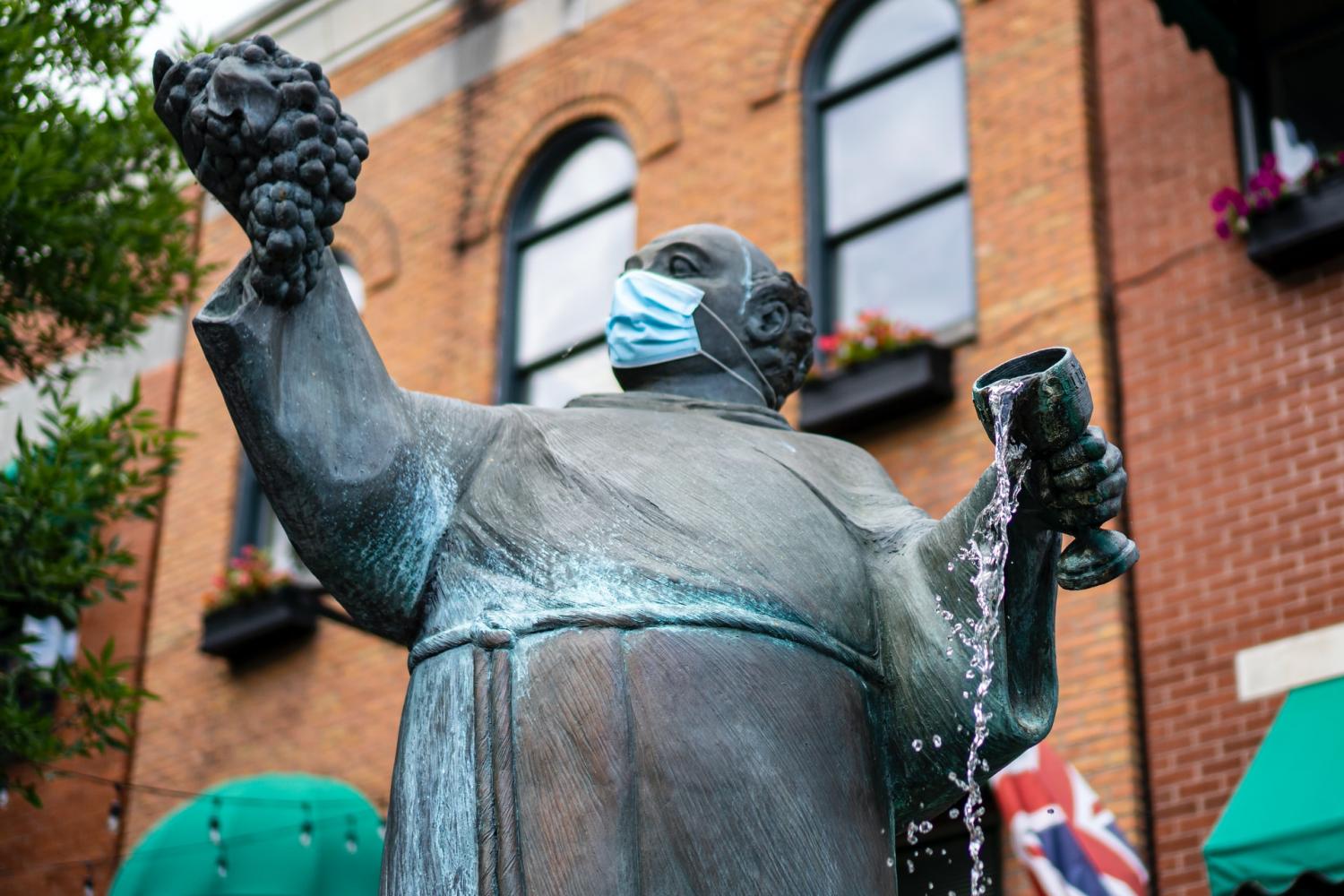

It’s been said the coronavirus pandemic hasn’t made history; it has simply fast-forwarded it. We could say the same about the ESG (environmental, social and governance) movement. The COVID-19 crisis has forced many companies to act fast, act decisively and act with purpose.
This new reality we’re all facing framed the conversation last week during Episode 1 of the 3BL Virtual Forum.
If you had planned in the first place…
Intel is one company that was able to act swiftly at the onset of this pandemic. Much of that agility lies in the fact that the company had created an in-house Pandemic Response Team when the SARS crisis hit East Asia in 2002, so a structure for rapid planning and pivoting was already in place.
As Suzanne Fallender, Intel’s director of corporate responsibility, explained during Episode 1 of the 3BL Virtual Forum last week, that response team was only one part of securing the company’s resilience over the past several months. In hindsight, the company’s leadership seemed unfazed during much of 2020, deciding to unfurl a long-term strategy designed to guide the company to 2030. While employees bought into this approach, so too did investors.
Fallender said the pandemic sparked an increase in interest from investors and other stakeholders, and in turn the company received more questions about its overall response — ranging from ongoing safety issues to racial equity and inclusion. Further, the company’s executive team has acknowledged that investors are asking about how companies like Intel are supporting talent while investing in purpose. Bottom line: We’re all distracted, but investors and other stakeholders are keeping an eye on the ball.
“Everyone is looking for meaning in these times, and meaning in how their work connects to something bigger than us all, so I think it’s a hopeful time. But we have a lot we need to do to support people,” Fallender said as she wrapped up her appearance on the virtual stage.
Go beyond a 'focus' — take care of your core customers and stakeholders
The images of ambulances bringing critically ill patients to hospitals in New York and New Jersey are still burned on many of our minds, as are the memories over initial fears of massive shortages of personal protective equipment (PPE).
To that end, those concerns prompted Johnson & Johnson to act, according to Lauren Moore, the company’s vice president of global community impact. She said J&J did what it could to leverage its supply chain to find critical PPE when it was in short supply — and it developed plans to support frontline workers for both the long and short terms. “If frontline workers have what they need, then we all have better care,” Moore said. “Instead of feeling like [the pandemic] is just happening to us, let’s learn from it and make sure something like it doesn't happen again.”
Don’t overlook your employees’ needs during this pandemic
Aflac depends on a large nationwide force of independent insurance agents in the U.S. and Japan to sell its insurance products — and those agents live off the commissions they earn. Darcy Brito, Aflac's business public relations manager, said the company offered those agents zero-percent loans to help them through that time and launched an $11 million fund to help out with financial support. “If there is any time where communicators have a value, it is today. It is important for all stakeholders to not only understand how important your position is, but also understand what they can do,” Brito explained.
As for its internal corporate employees, Aflac had to quickly cope with a workforce that went from being almost uniformly in offices to becoming completely dispersed and working remotely. Each company may have different tactics to ensure everyone is connected, whether they are town halls, virtual happy hours or meal deliveries. But Brito’s message to all managers and execs is: “Whether you are small or large, [it’s critical] you have the lines of connection with employees, that you’re understanding, and that you’re also aware about what’s happening to employees.”
For those of us who simply consume entertainment, whether doing so via the television or streaming on our laptops, we often assume it all just “happens.” But Crystal Barnes of ViacomCBS reminded us that an entertainment company’s workforce is a complicated one, and the shutdown of theaters and studios in the early days of this pandemic resulted in a huge impact on many livelihoods. The media giant moved quick to partner with organizations such as the Actors Fund of America and the Motion Picture Television Fund to ensure that crew members, supporting cast and other workers who support the production of television shows had some level of financial support, Barnes said. And all of this happened just as the two companies, Viacom and CBS, had their merger green-lighted.
Yes, legacy and family-run companies can turn on a dime
What, your supply chain can’t move fast enough? Tell that to Shelley Williams of SanMar, the company few have heard of but almost all of us have touched. It creates such products as promotional caps, T-shirts and fleece.
Clearly, the need for such items dissipated overnight in early March. But SanMar moved quickly, Williams explained to the virtual Forum’s audience. After meetings to sort out the role it could play during this pandemic, the company decided to partner with other apparel makers and the U.S. government to produce a million masks.
How did the company pivot so fast? SanMar stopped the production of its usual products, trained employees, developed new safety protocols, and worked with governments such as that of Honduras to bring employees back to work and provide them with resources to ramp up production. The results speak for themselves: Williams said SanMar has manufactured over 200 million masks to date including many that are now included in its line of promotional products. In the end, for this family-owned company, its advice is: “Lead with purpose and lean into it in times of crisis,” Williams concluded.
On Thursday, October 15 from noon to 2:15 p.m. ET, Episode 2 of 3BL Forum: Brands Taking Stands - Business Elects to Lead will focus on one of the most important issues with which we as a society have got to honestly reckon — racial and economic inequities — and the importance of business leadership at a time when it’s needed most.
During episode 2, we’ll feature conversations with senior leaders from BET Networks, Pizza Hut, Zeno Group, Newman’s Own, Chief Executives for Corporate Purpose (CECP), Fresh Energy, Porter Novelli, Northern Trust Asset Management, UnidosUS, The Cavu Group, Tides Foundation, Okta and Ben & Jerry’s. Registration is free.

Image credit: Jack Vessels/Unsplash
Emissions from Farming Could Overwhelm Global Climate Goals

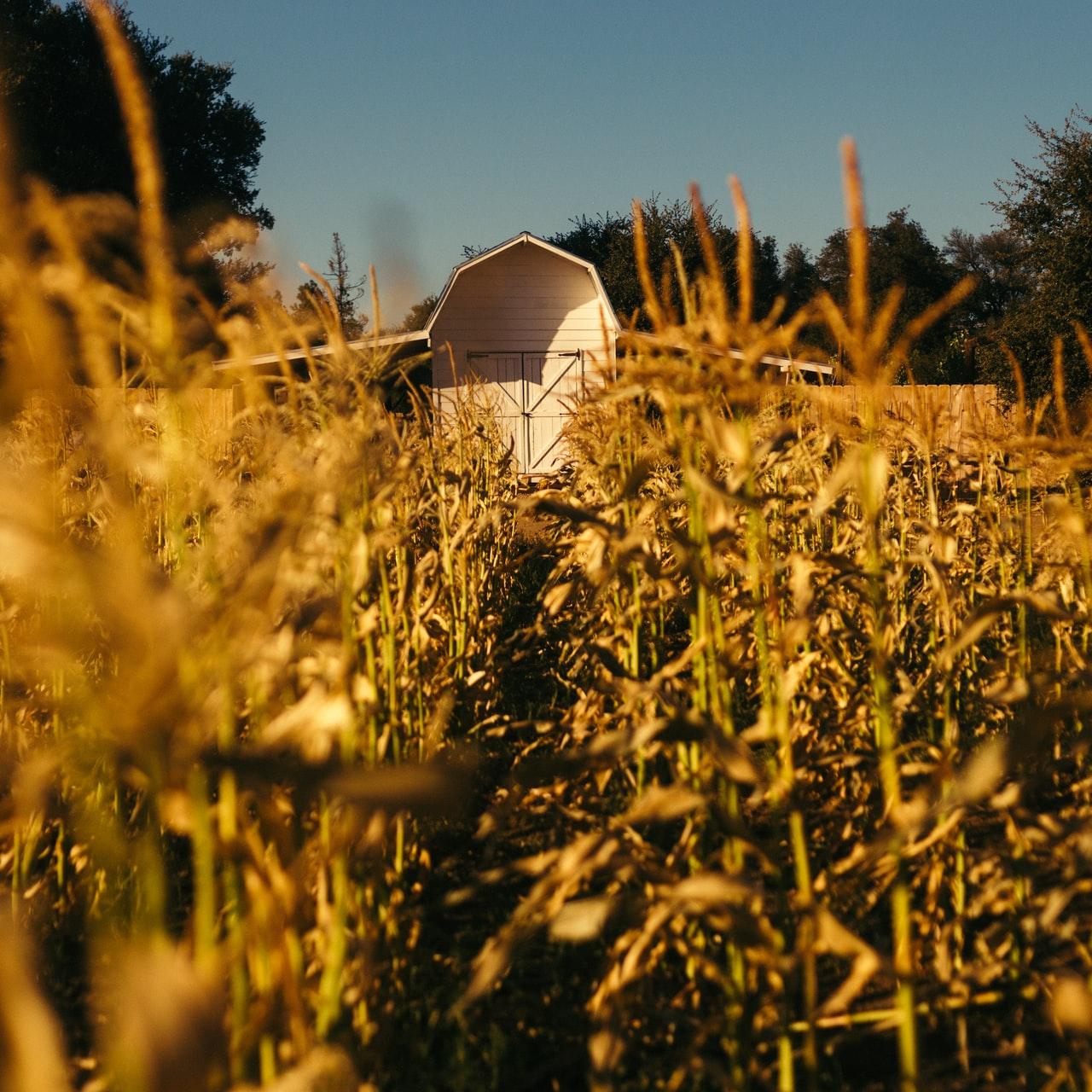
Plenty of global food companies say they are determined to work with their supply chains to reduce emissions. There’s also been no shortage of innovation within agriculture, whether it’s related to reducing emissions, finding new ways to raise livestock, developing more sustainable methods to grow crops, or using water more effectively on farms and orchards.
But according to a study recently published in the journal Nature, those efforts may be about as effective as arming oneself for a gunfight with a butter knife.
The challenge stems from the stubborn fact that the world’s farmers are scrambling to raise enough food to feed a growing global population. And despite all the challenges they face, from climate volatility to rigid distribution systems, the world’s agricultural systems for the most part are succeeding. From a big picture perspective, crop yields are increasing, and farmers are far more efficient at producing food than they were a couple of generations ago.
Where the problem lies is within one tactic farmers have harnessed to ensure they can still produce a steady amount of food: the use of artificial fertilizers. Ammonium nitrate is mostly known to the general public for its role in the deadly Beirut blast in August 20202, which killed at least 200 Lebanese citizens and leveled many of the city’s neighborhoods. But ammonium nitrate and other chemical fertilizers have become an integral part of the worldwide agricultural supply chain.
The culprit: Nitrous oxide, or N2O, is a byproduct of ammonium nitrate's use on farms. And the dozens of researchers who participated in this Nature study found that emissions of N2O into the atmosphere increased by an average of 1.4 percent between 1980 and 2016.
That 1.4 figure may seem small, but according to this study’s authors, it could pummel the 2 degrees Celsisus warming limit to which negotiators agreed in the 2015 Paris Accords. If left untouched, that same rate would make a precarious 3 degrees Celsius rise in global temperatures easy pickings — a level many climate scientists say would result in “catastrophe.”
While N2O is also the same compound as “laughing gas,” to climate scientists, this is hardly a matter to giggle over. In any event, even if this gas could somehow be captured for reuse, there are few industrial applications to make such an effort worth the trouble.
Meanwhile, most of the focus to which food companies have committed when it comes to revamping their supply chains is reducing carbon emissions. But most estimates suggest N2O has a potency that is 265 to 300 times more intense than that of carbon emissions.
It’s a similar argument to what we’ve been hearing in recent years about the energy sector’s impacts on climate change: While climate targets have largely centered around carbon emissions, the far more potent greenhouse gas methane has proven to become a more intractable problem.
The solutions are not as far-off as many of us may think. Precision fertilizing and embracing new technologies such as artificial intelligence can assist farmers, and thereby food companies, in tackling the emerging threat of N2O. But as the Guardian reports, the only global region that’s making progress on halting N2O emissions is Europe — and that’s only due to requirements regulators have imposed on industries such as the textiles sector.
And the largest threat N2O presents is one many environmentalists thought was tackled 30-odd years ago: These emissions can take a toll on the world’s ozone layer.
As for the action the world’s leading global food companies could and should take, the short answer lies in this report’s conclusion: “Reducing excess nitrogen applications to croplands and adopting precision fertilizer application methods provide the greatest immediate opportunities for the abatement of N2O emissions.”
Be sure to sign up for the weekly Brands Taking Stands newsletter, which covers the latest in business and employee activism - it arrives in your inbox every Wednesday.
Image credit: Patrick Fore/Unsplash
Achieving Social Equity Is Connected with Climate Finance


In our previous article, we focused on how the world’s poorer citizens are most vulnerable to the globe’s most dangerous crises: COVID-19 and climate change. The people at most risk of contracting COVID-19 – low-income individuals, women, workers dependent on working in the informal economy, and racial and ethnic minorities – are also the same citizens that are most at risk due to the climate crisis. Reaching true social equity will require a focus on both addressing climate risks and ensuring some level of finance is available to all.
Social equity requires a focus on long-term recovery
The past several months of the COVID-19 pandemic can tell us a lot about how to address climate risks, and importantly how to do so in ways that can achieve social equity. A strong post-COVID-19 recovery could be a unique policy and investment opportunity to address both climate resilience and equity issues by squarely incentivizing, or even mandating, the financial sector to fill what has otherwise been a gap in financing in order to create resilience for the most vulnerable.
Many policy makers are thinking through practical ways to action this right now. For example, a recent OECD report on Green COVID Recovery recommends “integrating environmental sustainability and socioeconomic equity” in policy packages – by, for example, lowering labor taxes concomitantly with raising taxes on pollution - in order to build long-term resilience, boost the prospects for social equity, and mitigate the regressive effects of environmental policies.
In addition, the IMF has been supporting this idea by promoting a “smarter, greener and fairer” recovery. As the current IMF Managing Director, Kristalina Georgieva, has stated, “We cannot turn back the COVID-19 clock, but we can invest in reducing emissions and adapting to new environmental conditions.”
However, how exactly sustainable and equitable COVID-19 recovery plans can support vulnerable communities – particularly those local communities hardest hit economically, and most exposed to climate related risks - remains to be seen.
There are several ways to do this, and the options to enhance resilience and close the equity gap include both public policy and private investment. There is no need to start from scratch, though, and the following recommendations provide practical mechanisms for achieving social equity within the financial ecosystem, and increasing the availability of affordable financing for climate-resilient investments for vulnerable communities:
The role of financial institutions like CDFIs and green banks
Community Development Financial Institutions (CDFIs): CDFIs are financial institutions with, with the support of the U.S. Treasury Department, are tasked with providing low- and moderate-income communities, individuals, and smaller firms with affordable capital.
In the United States, there are more than one thousand CDFIs in the form of commercial banks, credit unions, and venture capital firms that are currently financing low-income communities, each of which can be mobilized to create community level climate-resilience. While CFDIs are beginning to take notice of the importance of climate change to the communities they serve, post-COVID mandates can help them better serve these communities’ climate-resilience needs. Nevertheless, coordination, capacity and financial support by the federal government may essential to unlocking CFDIs for climate adaptation.
Green Banks: In addition to CDFIs, Many U.S. states (and more than 35 countries around the world) have green banks or green banking mechanisms, which in a nutshell, “leverage public funding to attract private capital for clean energy projects”.
These institutions are – by design and mandate – focused on climate finance and investment, but traditionally have been far more focused on renewable energy or energy efficiency investments. Expanding the model beyond energy to include a greater variety of climate-related projects that support vulnerable communities, including mobilizing private investment so it can help attain authentic social equity, could help ensure these institutions address all aspects of climate change, not simply mitigation.
Furthermore, these institutions could be critical links in the financial “ecosystem” by bundling and securitizing pools of local investment which can then be bundled to create investment vehicles for larger investors, as was the case with the Connecticut Green Bank’s securitization of solar home renewable energy credits.
In short, the global business community can’t address the COVID-19 crisis without viewing it through the lens of climate change – and we need to retool the financial sector in order to help guide the world’s poorer citizens through both this pandemic and navigate through the long-term risks linked to climate change.
Co-author Stacy Swann is CEO of Climate Finance Advisors, a Benefit LLC with the explicit purpose of creating a material positive impact on society and the environment. Ms. Swann is also a Board Member of the Montgomery Country Green Bank.
Image credit: Lawrence Makoona/Unsplash
For This Company, Plant-Based Foods Come From a 100-Year Vision
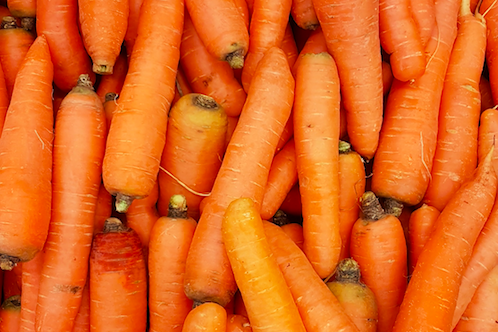
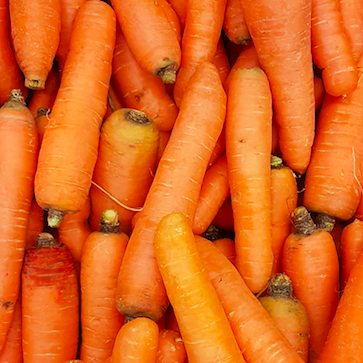
Many companies have had to pivot quickly and focus the COVID-19 related challenges confronting them. Bolthouse Farms says it’s doing exactly this and more. The San Joaquin Valley-based company responded to increased consumer demand for plant-based food by doing what it has done best for the past century: pursuing its vision of “plants powering people.” That means a renewed commitment to plant-based food products.
This vision is a verified consumer trend. According to the Plant Based Foods Association (PBFA), the rate of growth in U.S. sales of plant-based food products has actually exceeded the growth rate of total food sales since the COVID-19 pandemic ensued in March 2020. Shortly after, Bolthouse launched new plant-based food products to hit store shelves this fall.
Founded in 1915, Bolthouse Farms has become an American powerhouse of juices, smoothies, plant-based protein beverages and refrigerated salad dressings. Nevertheless, over the years it has not been an easy ride for the company.
A century-old vision of plant-based foods remains intact
Bolthouse Farms has gone through multiple changes over the past decade. Campbell Soup Company acquired the brand in 2012 in an effort to add healthy offerings to its product line. After the business press widely reported performance issues including the recall of 3.8 million bottles of protein shakes, Campbell’s eventually sold Bolthouse Farms to the private equity firm Butterfly Equity in 2019.
Butterfly Equity operating partner Jeffrey Dunn assumed the role of chief executive officer at Bolthouse Farms; that was a natural decision as he had previously worked as the president and CEO of the company. “I returned to Bolthouse Farms because I believe there is a huge opportunity to help people change the way they are eating, both for themselves and for the planet,” Dunn said.
In an interview with TriplePundit, Dunn explained how the company has refocused on its original roots of carrot farming and sustainable food production since its separation from Campbell’s. "We have established a long-term vision for the new Bolthouse Farms — 'plants powering people' — which starts with a focus on healthier and more accessible plant-based eating but goes beyond that with an holistic commitment to powering our consumers, our employees, our communities, our partners and the planet," Dunn told us.
The vision: Plants powering people is a trend forecast nearly 100 years ago when the Bolthouse family started the company. Today, consumers have a plethora of plant-based food options and easy access to information about all these choices. All of this helps to encourage the pursuit of a healthy and sustainable lifestyle, whether it’s out of concern for animal welfare, environmental sustainability, wellbeing or personal health. “Consumers are making more mindful choices at the shelf — and their needs are changing quickly," Dunn explained. "We are seeing an increased demand for products that help promote wellness, that taste great and are available at a good value."
Bolthouse moved fast in contributing to the plant-based food economy. The company has launched 33 new products, including keto-friendly beverages, salad dressings as well as smoothies and juices.
COVID-19 reinforces the need for food security and employee wellbeing
Bolthouse Farms is no exception to COVID-19 and the challenges the pandemic has forced businesses to confront this year. The company said it approached this pandemic by focusing on food security and the wellbeing of employees and customers. While furthering its food product innovations, Bolthouse Farms implemented health and safety procedures, mandated a work-from-home policy for non-essential employees, and kickstarted a supplemental bonus in pay for essential workers, Dunn explained.
To ensure food security, the company purchased food and essentials for its employees and partnered with local nonprofits and international organizations to support the various communities where it does business. By early August, the company contributed more than $4 million worth of donations to stakeholders including employees, customers and the wider community. Examples of such actions include the donation of truckloads of fresh carrots, 200,000 cases of its plant-based food products and cash for the nonprofit Feeding America.
It will be compelling to watch how companies like Bolthouse Farms pursue their vision in alignment with their employees’ health, ongoing concerns over a “second wave” of COVID-19, and rapidly changing consumer trends. Either way, customers are demanding plant-based products and with every innovation, Bolthouse Farms shows how we’re another step closer to a more humane and sustainable food supply chain.
Image credit: Rodrigo dos Reis/Unsplash
International Day of the Girl, Pandemic Edition, Is All About the Necessities


The International Day of the Girl has been celebrated since 2012 as an optimistic day with a focus on the future. There is always a spirit, as well there should be, of envisioning what today’s girls can achieve as the leaders, entrepreneurs, researchers, and activists of tomorrow. But this time, too many girls are stuck in the long present of 2020 - and the lack of access to safe water is a huge reason.
International Day of the Girl is a reminder of how many barriers many girls and young women face
This is a day to acknowledge that, whatever the future holds, girls are carrying burdens right now – especially in households living at the base of the economic pyramid. Some of the heaviest and most unfair of these burdens are connected to water.
Girls, and women, have a greater need for water and sanitation access than boys and men, both because of their bodies and because of the roles that so many societies construct for them. In a home without direct access to water and sanitation, water collecting can become a girl’s responsibility from a young age, and going to the bathroom can be a long journey. At least 1.25 billion women and girls have no access to a safe, private toilet, and half a billion have no toilet at all.
How COVID-19 has increased sanitation risks
Right now, the situation is worse. Lockdowns around the world have made water and toilets outside the home harder to access, and even after lockdowns lift, every trip outside comes with a risk of infection. This is, among other setbacks, making life harder for girls with periods. In a Plan International survey of water professionals in 24 countries, 51 percent reported that the pandemic was harming people who menstruate by reducing access and availability of clean water to help manage periods. The problem is compounded by price hikes on pads and tampons as well as disruptions in strained healthcare services, a dangerous combination for the girls who are already the most marginalized and farthest away from access.
Lack of water and sanitation follows girls everywhere they go, every day - including this year's International Day of the Girl. It is there at home, if they are among the 40 percent of the world’s inhabitants who lack a place in the household to wash their hands with soap and running water (what should be the universal ritual of 2020 remains maddeningly inequitable). It is there at school, if and when they are allowed to return: in pre-pandemic measurements, nearly half the world’s schools had no soap-and-water handwashing facilities for students. It follows them out into the crowded streets and lonely paths where they may have to walk for hours to collect water for their entire household.
Once we acknowledge this dangerous and deeply unfair situation, there is still plenty of time for optimism on this Day of the Girl. There are sustainable answers to the global water and sanitation crisis, and recent breakthroughs in community-driven and market-based financial solutions have proven this. WaterCredit, a solution that has catalyzed $2.4 billion in capital for local financial institutions so they can offer microloans for households to invest in their own water supply and sanitation solutions, has reached 30 million people living at the base of the economic pyramid in 13 countries.
A solution for safe water that opens up opportunities to women
It is no coincidence that most WaterCredit borrowers are women: 88 percent worldwide, and 99 percent in the fast-growing markets of India and Bangladesh. With the capital to install a tap or toilet at home, women win back wasted hours of their lives to invest in income-generating activities, engage in their communities, and make better homes for their families. When they do this, their children benefit too – especially their daughters.
An evaluation of WaterCredit in two states in India found that water loan recipients reduced water collection times by an average of 55 minutes per round trip, while clients taking out toilet loans reduced their toilet round-trip time by 17 minutes. Girls stand to grow up without the risks of harassment and violence that come with these journeys, and without the avoidable sicknesses and school absences that they too often experience.
So by all means, let this International Day of the Girl be another day of optimism. The pandemic has not changed what girls can achieve; it just underlines the importance of what they live with right now. Safe water, a toilet, and a place to wash one’s hands at home mean the world. Investing in households’ ability to get these necessities is concrete action to help girls live better lives now, and to truly spread their wings when the long present of 2020 moves on and becomes something more.
Image credit: Gyan Shahane/Unsplash
Efforts to Plant Trees After the Wildfires Must Include Corporations


This year’s wildfires in California, Oregon and Washington, burning over 7 million acres, have marked the worst fire season in at least 70 years. Other countries are battling flames, too. Last year, Brazil grappled with increased fires in the Amazon rainforest. Already, the early resurgence of the Amazonian fire season is raising alarm bells.
These days, “there are a few things that people can come to agree on. One of those areas is trees,” Zach Kane, corporate partnerships manager at the Arbor Day Foundation, tells TriplePundit. Protecting and restoring forests is an easy goal to get behind, given the losses that the wildfires have brought and the role trees play in air, water and earth systems, Kane added.
After the wildfires, reforestation requires planting — and a lot of it
In witnessing the devastation wrought by the wildfires, it may seem easy to become demoralized and paralyzed. (Just imagine the vastness of 7 million acres.) But Kane reassures us that there are tangible steps to restoration. And these steps are already being taken by organizations, communities and even businesses.
The Arbor Day Foundation, which has committed to planting trees worldwide since 1972, outlines a six-fold process for wildfire response. The Foundation’s steps don’t start and end with planting seedlings. Restoration requires time, dedication and certainly collaboration.
Corporations have a place in the process. Once the fire has stopped spreading, the displaced have been sheltered and fed, damages have been assessed and prioritized, and local experts have planted seedlings, corporate partners can come in to supplement the previous work already done.
As you might imagine, the core to restoration is actually planting trees. The Arbor Day Foundation says it is planting more than 21 million trees globally this year.
Businesses can plant trees, subsidize and educate
After the 2018 wildfires in California — when 8,000 fires burned more than 1.8 million acres of forests — the Arbor Day Foundation created a planting initiative for the areas most affected by fires. This California Wildfire Restoration project aims to plant 2 million trees across 8,000 acres. Seed collection and propagation began in the winter of 2018. Planting began this year and will continue through 2022.
Where exactly do corporate investment and planting fall into the restoration work going on?
“[Corporations] obviously support the financial pieces, where, without their support, these trees would not be going back in the ground,” Kane says. “But they also elevate the awareness and urgency around wildfire recovery. Brands are very powerful.” In a different way from nonprofits and non-governmental organizations, brands are able to reach much of the public, he adds.
Consumer goods company Procter & Gamble has leaned into its commitment to planting with the Arbor Day Foundation. This summer, P&G joined 17 other companies in the Evergreen Alliance — making a long-term commitment to help the Foundation plant 100 million trees and inspire 5 million tree-planters by 2022 through action, engagement and building awareness. P&G says it will also donate 1 million trees for the U.S. and Europe.
Prior to this commitment, the company’s Family Care brands, including Charmin, Puffs and Bounty, were the first to join the California Wildfire Restoration project, opening the door for other companies around the world to join the initiative, Kane says in a video.
The corporate impetus for planting trees
The Arbor Day Foundation works with over 250 companies in pursuing its mission, Kane says. When asked why a company would consider making a commitment to forests, he referred to the sustainability commitments many companies have embraced in recent years.
“If a company has a sustainability goal to try to get toward net zero, trees can be a part of that resource. If they're trying to support areas that have been devastated by natural disasters, trees can be a part of that long-term recovery — and it just continues to show all of the different co-benefits. So, you're not just supporting trees for one reason, but for a multitude of reasons,” he says.
Long story short, planting trees can be a highly effective and relatively simple way to achieve carbon reduction goals while supporting communities and the planet.
Recovery takes time — planting takes years. But resources and cross-sector collaboration help restoration move along more quickly and effectively for ecosystems and communities in need — and there sure are a lot of those out there right now.
Image credit: Andrew Spencer/Unsplash
The Link Between Climate Finance and Building Resilience after COVID-19
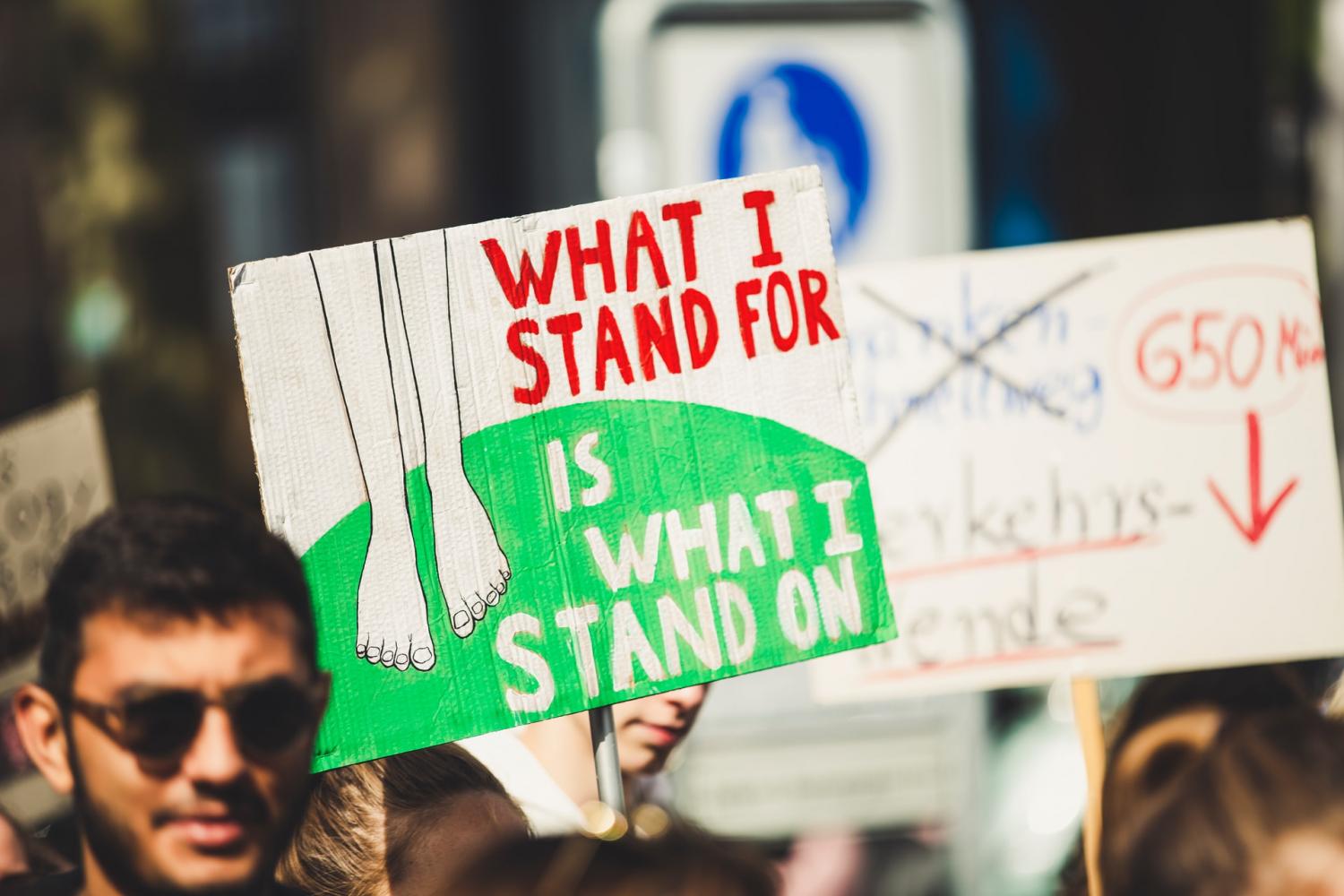
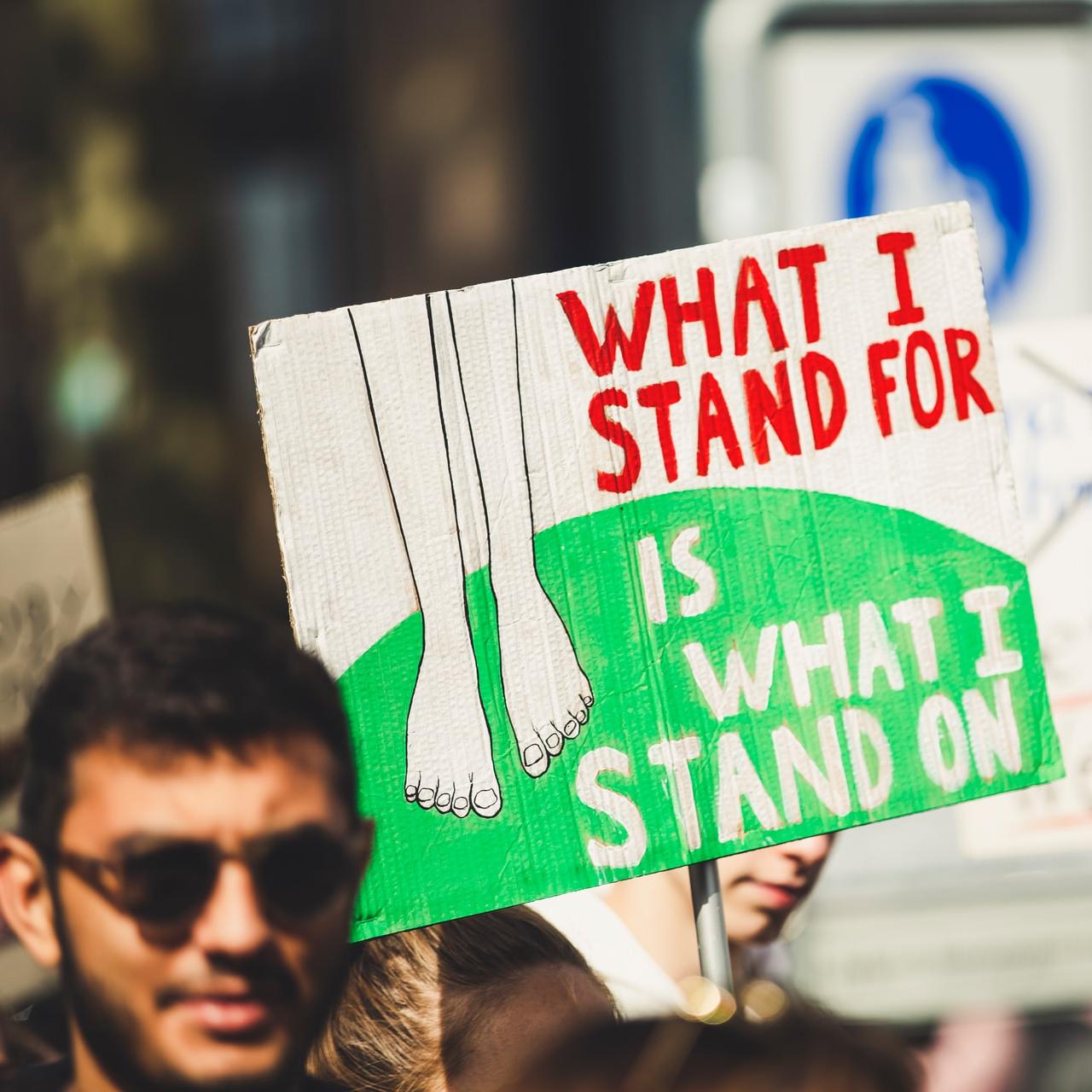
Photo: a 2019 climate change protest in Nuremberg, Germany. More observers see links between the global COVID-19 pandemic and climate change risks.
Co-written with Stacy Swann
In 2020, the world’s poor find themselves at the nexus of two crises: COVID-19 and climate change. The people most vulnerable to COVID-19 – low-income individuals, women, workers in the informal economy, and ethnic and racial minorities – are the same citizens that are most vulnerable to weather and climate crises.
The poor disproportionately face obstacles to adapting to the effects of climate change due to unstable incomes, little if any savings, their work in the informal economy, a lack of access to credit, and of course, the reality of the landscape in the communities and countries in which they live.
These constraints have only become exacerbated in the COVID-19 global recession. As governments, businesses and financial institutions move into economic recovery, it is necessary to ensure that that recovery is sustainable, resilient and fair – if not, it will be reinforcing an already dire situation for the world’s poor.
A population’s vulnerability to climate change proceeds along three axes: exposure, susceptibility and the ability to cope.
Where it comes to access to finance, low-income populations suffer the impacts of all three. The poor are more exposed to climate change because of where they can afford to live or the economic activities they engage in, such as farming or fishing.
For instance, a Harvard study found that Miami-Dade County was affected by “climate gentrification:” as flood risks increase, wealthier residents are moving inland, displacing local low-income communities. Further, some studies suggest that climate change adaptation expenditures tend to be driven by wealth rather than need, which exacerbates the inequalities between high and low-income communities if not shifting more climate risk onto the latter.
Finally, structural inequalities ensure that low-income communities lack access to the social, cultural and financial assets they need to cope with the onset and consequences of climate change. Low-income urban households tend to hold most of their wealth in a single asset – housing – which means they have a single and significant point of financial vulnerability to climate change. Conversely, high-income households generally hold better-diversified portfolios of assets and wealth, both financially and geographically making them better able to withstand financial shocks from climate impacts.
Taken together, these factors imply that the costs of climate change may make vulnerable communities even more vulnerable over time, increasing proportionate costs of climate change for these groups exactly when they cannot afford it, and in doing so, accelerating inequality. This is the exact opposite of progress.
Investing in resilience is really the only option to address these headwinds and ensure a fair and just transition. Finance, both public and private, has a powerful role to play in mitigating the cycle of income inequality and climate vulnerability, but historically this sector and its leaders have been deaf to the needs of the most vulnerable, deeming these groups as higher risk from a credit perspective. Furthermore, there has been an increasing gap in the financial ecosystem of banks and investors serving vulnerable communities and those that do exist often provide capital at significant cost, effectively reducing the availability of credit to low-income communities.
In our next article, we’ll focus on two strategies that can help these struggling communities recover in the long term.
Co-author Stacy Swann is CEO of Climate Finance Advisors, a Benefit LLC with the explicit purpose of creating a material positive impact on society and the environment. Ms. Swann is also a Board Member of the Montgomery Country Green Bank.
Image credit: Markus Spiske/Unsplash